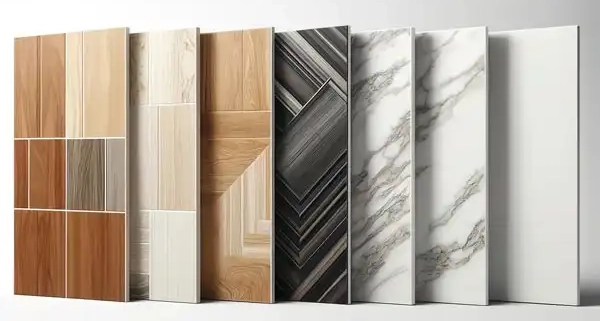4 Benefits of Edge Banding in Plywood
4 Benefits of Edge Banding in Plywood
If you have been considering the use of plywood in your home, you may be interested in the benefits of edge banding. Not only is it a cost effective way to add a little polish and refinement to an inexpensive piece of wood, but it can also prevent interior plywood from warping.
Prevents interior plywood from warping
If you’re planning to store interior plywood, there are ways to keep it in good shape. For starters, try storing it in a horizontal manner. This prevents uneven shrinking that could cause the wood to warp.
Another approach is to put a water-resistant sealant on the face of the board. Keeping it in a dry, cool and shaded location is also helpful. You may even want to use a dehumidifier to counter humid environments.
Warping is a problem that plagues all wooden products. Not only can it be dangerous, but it can affect the structural stability of the building materials.
The simplest way to avoid this is to store plywood in a flat, dry and cool location. However, it’s not always easy to do this in a small shop.
Plywood is made up of many layers. The layers can warp together if one is improperly stored. A common trick is to store it vertically, but this can be problematic when it comes to small shops.
To avoid the problem, store your lumber in a cool, dry and shaded location. Also, avoid storing wood that’s wet. It will swell and expand when it absorbs moisture from the air. That’s not necessarily a bad thing, but it can cause your underlying sheets to move.
The best way to avoid a problem is to purchase from a trusted source. Whether it’s a home improvement center or a lumber supplier, make sure you’re buying from a reputable company.
One way to prevent interior plywood from warping is to measure its moisture content. You can do this by taking a relative humidity reading. While the air temperature does not have any influence on its moisture level, it can help you find out what you’re dealing with.
Adds polish and refinement to an inexpensive piece of wood
Edge banding is a great way to give your furniture a more finished look. It can add polish and refinement to an inexpensive piece of wood. Depending on the style of your home, you can choose from different looks and colors.
There are two basic types of edge banding. The first is the straight edge banding. This type is typically more expensive. However, it gives you a more finished, professional look.
You can also choose curved edge banding. Curved bands are less common, but they can give your furniture a stylish look.
When choosing edge banding, make sure that it is compatible with your existing pieces. In addition, the finish can be painted or stained to match the rest of your home.
Edge banding can also help your projects last longer. It is durable and can withstand regular knocks and bumps. Also, it can protect your furniture from the elements.
Edge banding is available in many materials. It can be made from solid wood, veneer, and even acrylic. If you want a more polished look, you can buy edge banding that has been pre-stained.
During the application process, you can use a sander. You can use a random orbital sander to speed up the process. After the edges are smoothed, you can use a trimmer tool to cut off any excess veneer.
Edge banding can be applied with glue, nails, or screws. Using painter’s tape can keep the adhesive in place. Painter’s tape is especially useful if you have longer, curved areas.
Glues used to make edge banding are usually hot-melt adhesives. PVA glue dries clear and is water-resistant. PA glue is tough under low temperatures.
Provides a smooth finish
Edge banding is a useful and worthwhile way to add a little refinement to your plywood projects. It also makes the edge of your plywood look like it’s been cut into a solid board.
One of the best things about using edge banding is that it comes in a variety of shapes and sizes. This means that you can match the finish to your project’s wood surface.
The first thing to do is to select the correct kind of edge banding. PVC is one of the most common materials, but it can be made from other sources. You can also find edge banding made from exotic hardwoods. Some are even pre-sanded. Using the right edge banding will ensure that your finished piece is as durable as it is beautiful.
The next step is to use a utility knife to trim the edges of the plywood. This will not only make the edge look smooth, but will also hide the plywood’s corner joints.
After you’ve trimmed the edges, you can start ironing the edge banding to your plywood. Keep in mind that you don’t want to do this too soon, as it can burn the wood. Also, don’t sit the iron on one spot. Move back and forth over a section of about two feet. Doing this will allow the adhesive to warm up, which will make it more effective.
Before applying the edge banding, you can use sandpaper to buff out the corners. Use 120-220 grit sandpaper. You can also use a sharp block plane to achieve a micro-beveled edge.
When you’re ready to apply the edge banding, make sure to start with the least visible side of the plywood. This will allow you to create a strong bond with the edge banding and plywood.
Is suitable for curved surfaces and rounded edges
If you want to add some decorative touch to your plywood project, then edge banding is a good choice. This type of edging is durable, easy to install, and can be applied to all sorts of curved surfaces. However, there are some things to keep in mind before you get started.
In general, you should use the same width and thickness of edge banding as the plywood you are using. There are some types of edge banding that are not as flexible as others, so it’s important to choose the right one for the job. Using the wrong kind can lead to serious maintenance problems.
Edge banding is available in different colors, sizes, and species. It can be purchased in rolls or in glue-less strips. You can also paint it to match your plywood’s finish.
Edge banding is great for covering up unfinished edges on plywood and other wood surfaces. When you are building furniture, the edge of the board can sometimes be very visible, so it is best to cover it. Whether you are finishing a cabinet, a desk, or a bookcase, you can give your project a polished look by adding edge banding.
You can apply edge banding by hand or by machine. Both options require cutting the plywood and the edge banding to the right size.
Using the right edge banding can protect your wood from moisture and wear. The most popular choices include laminated and polypropylene. Laminated edge banding is more flexible, so it is better suited for curved surfaces. Polypropylene is less susceptible to moisture and is easier to clean.
While the most common type of edge banding is made from polypropylene, there are many other options, including melamine and ABS. Melamine is especially good because it is UV light resistant.
Is durable
Whether you’re building a new cabinet or adding an extra touch to your furniture, plywood edge banding is an excellent choice for adding a durable finish. There are several different types to choose from, including solid wood, veneer, and PVC. It’s important to decide what type of material you want your banding to be made of, because it can affect how well it will hold up.
Solid wood edge banding is highly durable, and will resist chipping and warping. It is available in a variety of thicknesses and can be stained to match your project. You can also find edge bands in exotic species.
Edge banding is usually applied to the edges of plywood, but can be used on other materials as well. Whether you need a solid wood, metal, or melamine edge banding, you can find it in a range of colors and widths.
If you’re looking for a cheap, durable, and easy to apply solution for edge banding, you should consider PVC. PVC can be used on nearly any kind of wood. And the banding is easily cut to curve the edges.
Depending on what you’re looking for, you can also buy edge banding that’s been pre-glued. This means you’ll be able to use a nail gun or stapler to install the edge banding. However, this can be time consuming.
Hot-melt glue edge banding is another popular option. This is less expensive than the other two options, and it is more convenient to use. However, it isn’t as strong or durable. Unless you’re working with a heavy-duty application, it isn’t recommended for outdoor furniture.
Iron-on edge banding is another way to add a durable finish to your plywood project. To apply it, you’ll first need to use a hot-melt adhesive on the back of a piece of wood veneer. After the adhesive has cooled, you can then iron it onto the surface.




